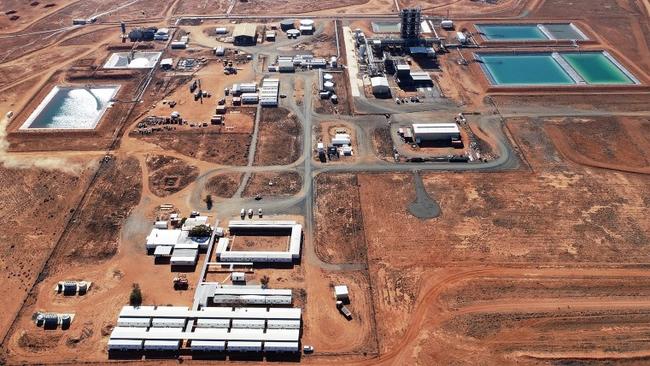This time it’s real, insist uranium bulls as it finally passes the post-Fukushima spot price
Spot prices for uranium oxide surged to about $US66 a pound on Friday, the highest levels since 2011 – and that has been enough for observers to suggest a bull market for the valuable resource.

As uranium prices surge to 12-year highs, the prices of local uranium stocks have surged too. This time it is different, according to uranium bulls – or, at least, more different than all the other times it was different.
Spot prices of uranium oxide surged to about $US66 a pound on Friday, the highest level since 2011, and this week marks the first time since the Fukushima nuclear disaster that the spot prices moved above $US60 a pound.
That has lifted the stock price of ASX-listed uranium hopefuls such as Boss Energy, Deep Yellow, Paladin Energy and Bannerman Energy, among others.
That is part of a broader global trend, according to Bloomberg data, which shows significant capital inflow over the last few months to exchange-traded funds in major markets such as the US and Europe.
In the short term, spot pricing has been pushed up by factors including a September production downgrade from Canada’s Cameco, which is struggling to return mothballed mine production to the market, and by the July coup in Niger, which threatened a major source of supply to French nuclear utilities.

All of that comes on top of heightened concerns in western Europe about their reliance on Russia as a source of enriched nuclear fuel.
But, while the uranium spot price is now higher than at any time since Fukushima, this is not the first time uranium has promised a comeback. Price spikes in late 2014, early 2017 and in 2022 helped along the regular predictions of uranium bulls that the long-term supply deficit would finally lift prices enough to encourage new production.
Each turned out to be a false dawn, with prices falling back to below the $US30 a pound mark that caused the commodity’s lost decade.
Since 2021 the trend has been moving steadily upwards, and is closing on the price the uranium industry says will translate into the higher long-term contract pricing needed to underpin the construction of new uranium mines.
Power companies are not particularly sensitive to the price of uranium oxide – fuel prices make up only about 10 per cent of the cost of running a nuclear reactor – and spot prices in uranium have traditionally sat 10 to 20 per cent below contract prices, which has played a major role in keeping existing producers such as Canada’s Cameco in business over the last decade.
Spot prices now sit well above the bottom end of the $US50 to $US80 a pound prices that Cameco finance boss Grant Isaac recently said could be achieved in the contract market.
Uranium industry veteran John Boschoff – the founder of Paladin Energy and now managing director of Deep Yellow – attended the World Nuclear Association’s symposium in early September and told The Australian on Friday the growing global consensus that nuclear energy would be needed to underpin efforts to reach net-zero carbon emissions by 2050 had finally created a tipping point for uranium miners.
WNA data shows that 60 nuclear reactors are currently under construction, 24 of them in China. Mr Boschoff said that, beyond Germany’s determination to shut down its nuclear energy sector, major economies such as Britain, US, South Korea and Japan were again looking to nuclear expansion for their future energy needs.

“There are now 14 economies – big ones – that have made the top-down decision that they need nuclear, this has not happened before. And you’ve basically got a supply industry that, post-Fukushima, has been in a hospice doing nothing, because prices were low,” he said.
Boss Energy will be the next Australian producer to enter the uranium market when its Honeymoon operation enters production this year.
Managing director Duncan Craib said nuclear utilities’ stockpiles of uranium oxide were running down, and the sector was finally nearing the inflection point needed to drive up prices to the $US80 a pound mark he believes is needed to encourage the entry of new mines.
“Last year, only 76 per cent of reactor requirements were covered by primary uranium supply,” he said.
“On average US inventories are back at 2012 levels – about two years of forward cover. EU inventories have dropped significantly to about 36 months of forward cover. It’s fair to say that post 2016-17 both European and US utilities have been, you know, common, have been burning more fuel than they’ve been purchasing.”
In addition to the rundown of stockpiles, Mr Craib said utilities had been spooked by the establishment of physical uranium buying funds, soaking up supply on the spot market.


To join the conversation, please log in. Don't have an account? Register
Join the conversation, you are commenting as Logout